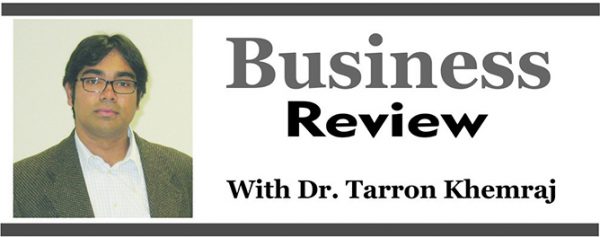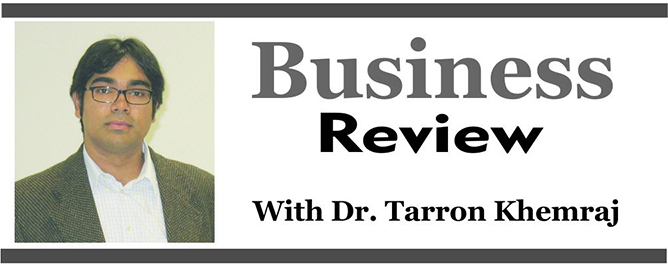 In my previous two columns before the one last week, “Dr. Politics Redux,” I made the point that if one political party gets most of its votes from one ethnic group, then the logic of clientelism or patronage means that the leaders must disproportionately reward its base. This becomes a major problem when base rewarding is strongly correlated with favouring one ethnic group over another when it comes to contracts, civil service jobs, government scholarships, house lots, gold-mining and timber rights, marketable land, and military recruitment, among other things. The columns furthermore noted that the struggle to control economic resources is at the centre of the no-confidence vote and the government’s refusal to give up power immediately.
In my previous two columns before the one last week, “Dr. Politics Redux,” I made the point that if one political party gets most of its votes from one ethnic group, then the logic of clientelism or patronage means that the leaders must disproportionately reward its base. This becomes a major problem when base rewarding is strongly correlated with favouring one ethnic group over another when it comes to contracts, civil service jobs, government scholarships, house lots, gold-mining and timber rights, marketable land, and military recruitment, among other things. The columns furthermore noted that the struggle to control economic resources is at the centre of the no-confidence vote and the government’s refusal to give up power immediately.
It is also true that both of the two dominant political parties, the PPP/C and PNCR, have been known to provide cross-ethnic opportunities for outsiders to earn rent (rent means earnings that are not associated with market competition, but through political connection or the monopoly ownership of a resource). The outsiders tend to be the better-off people of the other group. In this scenario, we should see the persistence high income inequality. The masses of the group which did not win and the independents tend to be the big losers in this outcome.
We do not have conclusive data or academic studies showing the inequality by ethnic distribution. We only have suggestive evidence, like that of a recent paper, “The rise of income inequality in Guyana,” authored by Mr. Collin Constantine and published in Social and Economic Studies. Some might argue that it is good that we don’t maintain this kind of data. Indeed, the PPP/C tried to conceal the population data by ethnicity. However, it is far from being a good thing. It is the very lack of data that allows accusations and counter-accusations of discrimination and marginalization to fester.
Data provides the necessary context for us to see that marginalization is not a binary concept; it exists on a spectrum. There are different degrees of marginalization. For example, on the one hand, the PPP wrongly claimed it could not find African Guyanese to be ambassadors but on the other hand it did a better job at distributing house lots to non-Indians, thanks mainly to Mr. Irfaan Ali. Indians were virtually locked out from military recruitment – because of a combination of discrimination and PPP telling them not to join – and the civil service during the 1964 to 1992 period of the PNC. However, the PNC implemented the MMA/ADA project – partly out of self-interest because they needed the foreign exchange to run the country – which is seen as disproportionately benefitting Indians.
On the flip side, we have a situation where the PPP’s economic policy of self-enrichment under Jagdeo devastated rural Indians to a greater degree than urban peoples. Those with party connections did well in earning rent. But, by and large, the PPP devastated rural Indians by failing to modify the large-scale sugar industry instead of making it fail. The Berbice bridge is another poorly conceived project which sucks their rural blood. It baffles the mind why Mr. Jagdeo awarded the Skeldon factory contract to a Chinese firm and not one with track record from Brazil, India or South Africa. One can never replace a large-scale enterprise with small and mini farms and expect living standards to rise when the market size is small and the cost of production is high.
I don’t have the data, but I have a hypothesis. It goes as follows: the PNC’s patronage system from 1964 to 1992 – which overwhelmingly benefitted its base – was relatively more egalitarian from a distribution standpoint. The PPP’s economic policy from 1992 to 2015 was a lot more unequal and resulted in greater inequality at the national level and at the intragroup level among Guyanese Indians. Just a small percentage of Indians did very well under the PPP. There is some very interesting research coming out from the academic world these days. Academics are establishing a link between income inequality and mental health problems. It makes me wonder to what extent the rampant showing off of rentier wealth by a few from around 2000 to 2015 contributed to high suicide rates among rural Indians.
Inequality data on Guyana and much of the Caribbean are not very good. One popular measure is the Gini coefficient, which takes values from 0 to 100. Zero means perfect equality or complete egalitarianism and 100 means complete inequality. Since rising inequality is associated with a higher likelihood of social instability, the CIA is keen to maintain a database of Gini coefficients. For example, the CIA dataset has Guyana at 45 for the year 2007, which is the past major estimate. This is a fairly high number but not the highest in the Caribbean. Jamaica has a Gini of 46 and Suriname 53. At the lower end we have Barbados at 40 and surprisingly Trinidad and Tobago is at 39. Outside of the Caribbean and among small economies, we have Mauritius at 39 and Botswana at an alarming 63.
We should consider that Guyana’s measure of income inequality was calculated before the demise of the sugar industry. The loss of economic opportunities in sugar will not be compensated for – in terms of employment – in the near future, if ever. The few who are already benefitting enormously from the emerging oil and gas sector are the professional firms in transport, accounting and similar services. This implies inequality should be higher today and will likely worsen over the next decade, assuming no geo-political force curtails ExxonMobil’s pumping of the oil. The Guyana government or the main opposition has nothing to say about this potential source social instability. Professor Clive Thomas, in his personal capacity, proposes one possibility: a cash transfer.
It is important to supplement the Gini with other measures. This is the approach of Constantine, a Guyanese PhD student, who has broken new grounds in this area of study. Constantine calculates inequality by looking at the top 10 percent income earners relative to the bottom deciles. There is no conclusive ethnic-based data, but his findings are suggestive and certainly opens a fruitful way to do these studies. He found that the top 10 percent preserved their income shares since the mid-1970s. This is interesting and it might indicate the ability of top earners to navigate the political divide. The Economic Recovery Programme (ERP) caused the lower income earners to lose income share. Most likely, given their dominance in the public service at 1992, African Guyanese lost income share and well-off Indians gained from the late 1980s.
As it relates to poverty – which is persistent when high inequality exists – the last comprehensive survey in 2006 indicates that 31.6% African, 30% Indian and 33.7% Mixed Guyanese were in poverty over a decade ago. A number was not cited for Amerindians in the 2011 Poverty Reduction Strategy Paper (PRSP), but it was noted that this group has a higher poverty percentage relative to any other group. It is important that we look at these numbers after the decline of the country’s main large-scale agro-processing industry, sugar.
It is clear that the two main political parties are not interested in constitutional overhaul. At one time in the late 1990s the PNCR was serious and the PPP never saw problems in the 1980 Burnham constitution. We are more likely to see the two parties coming to an agreement on dual citizenship than constitutional overhaul. Therefore, we need some mechanisms that will show that marginalization is not a binary occurrence. Transparency and data would help to put context to the awarding of economic opportunities, such as scholarships (which enables long-term accumulation of human capabilities and earnings), house lots, goldfields and the like, government contracts, state employment and military recruitment. The ethnic composition of all these economic opportunities must be on a website for everyone to access. This will empower civil society to address this crucial issue on sound basis.
In closing, I am assuming the political class is enlightened enough to understand the importance of having publicly available data to address the accusations and counter-accusations of marginalization. There can be no social cohesion without data! Without data it is rational for us to assume the worst case scenario.
Comments or questions can be sent to tkhemraj@ncf.edu





